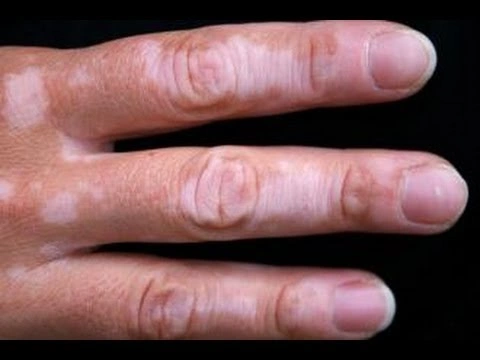Best Vitiligo (White Spots) Treatment in Gurgaon, Delhi NCR, India
Vitiligo (vit-ih-LIE-go) is a skin disease in which the skin starts losing its original color and turns into white patches. The problem can occur at any stage or age. The expansion and rate of skin color loss are unpredictable. It may happen to all types of people, but darker people may have more visible signs. Sometimes, it cures very easily and sometimes it may stay for long. It can affect any skin area of the body. It may also affect the hair and mouth as well.

As per dermatology, skin color depends on melanin. Vitiligo occurs when the melanin dies or stops working. Vitiligo is not painful, life-threatening, or contagious.
Causes of Vitiligo:
- It occurs due to non-production of melanin when pigment-producing cells (melanocytes) die.
- Attack on the immune system or autoimmune disorder.
- Family history or heredity.
- Sun exposure or sunburn.
- Stress.
- Chemical exposure.
The basic cause is the death of melanin or skin cells. The actual reasons for skin cell death are still unclear. If Vitiligo is not treated at the right time, it may lead to severe risks such as:
- Social & psychological distress.
- Sunburn and skin cancer if the skin is not protected.
Symptoms of Vitiligo:
Vitiligo starts with a small patch and then spreads across the body slowly if not treated. It may take a week, a month, or a year to spread. The signs are uneven in shape, and over time, inflammation can occur. Generally, it does not cause discomfort, irritation, soreness, or dryness of the skin.
Vitiligo may occur in people below 20 years of age, although it can also appear after 40.
- Appearance of white spots or patches on the skin.
- Visible lighter patches on dark or tanned skin.
- Cycle of pigment loss and stability.
- Discoloration on hands, feet, arms, face, lips, etc.
- Patchy loss of skin color.
- Whitening or greying of hair on scalp, eyelashes, eyelids, or beard.
- Loss of tissue color inside the mouth and nose.
Possible symptoms are white patches that may spread over time.
Types of Vitiligo:
- Non-segmental Vitiligo: When white patches cover both sides of the body. 90% of cases belong to this type as affected areas are more exposed to the sun.
- Segmental Vitiligo: Less common, accounting for 8–10% of cases. It affects only one side of the body and is less erratic in nature.
Diagnosis of Vitiligo:
- Medical history and physical examination.
- Skin biopsy.
Treatments of Vitiligo in Gurgaon:
Some treatments may help restore the skin color and tone, although they may bring side effects. At the initial stage, a doctor may recommend self-tanning products. Various approaches to treat the problem include:
- Medicinal treatment.
- Light therapy.
- Surgery.
The choice of treatment depends on the disease and doctor’s suggestion.
- Medications: Applying corticosteroid cream to affected areas may help regain skin color if started early. Results may take several months. Side effects can include skin thinning or streaks. Mild usage is allowed for children and those with sensitive skin. Some medications aim to improve the autoimmune system and help cure depigmentation on the face and neck.
- Therapies: One of the well-known therapies is photochemotherapy using psoralen and UVB light. This helps restore color when combined with medication. Treatment may be repeated up to three times a week for 6–12 months. Depigmentation therapy is used when Vitiligo affects most of the body, to even the skin tone. It involves applying depigmenting agents once or twice daily for nine months or longer. Possible side effects include redness, swelling, itching, and dry skin.
- Surgery: If light therapies don’t work, surgical treatments can be adopted to even skin tone and restore color.
- Skin Grafting: Small patches of normal skin are removed and attached to depigmented areas. Useful for small patches of Vitiligo.
- Blister Grafting: Small blisters are created on pigmented skin using suction, removed, and transplanted to discolored areas.
- Tattooing (Micropigmentation): Pigments are implanted into the skin, effective for darker or tanned skin.
Only an expert dermatologist can evaluate the right type of treatment. Contact our Centre to get effective Vitiligo Treatment in Gurgaon.
